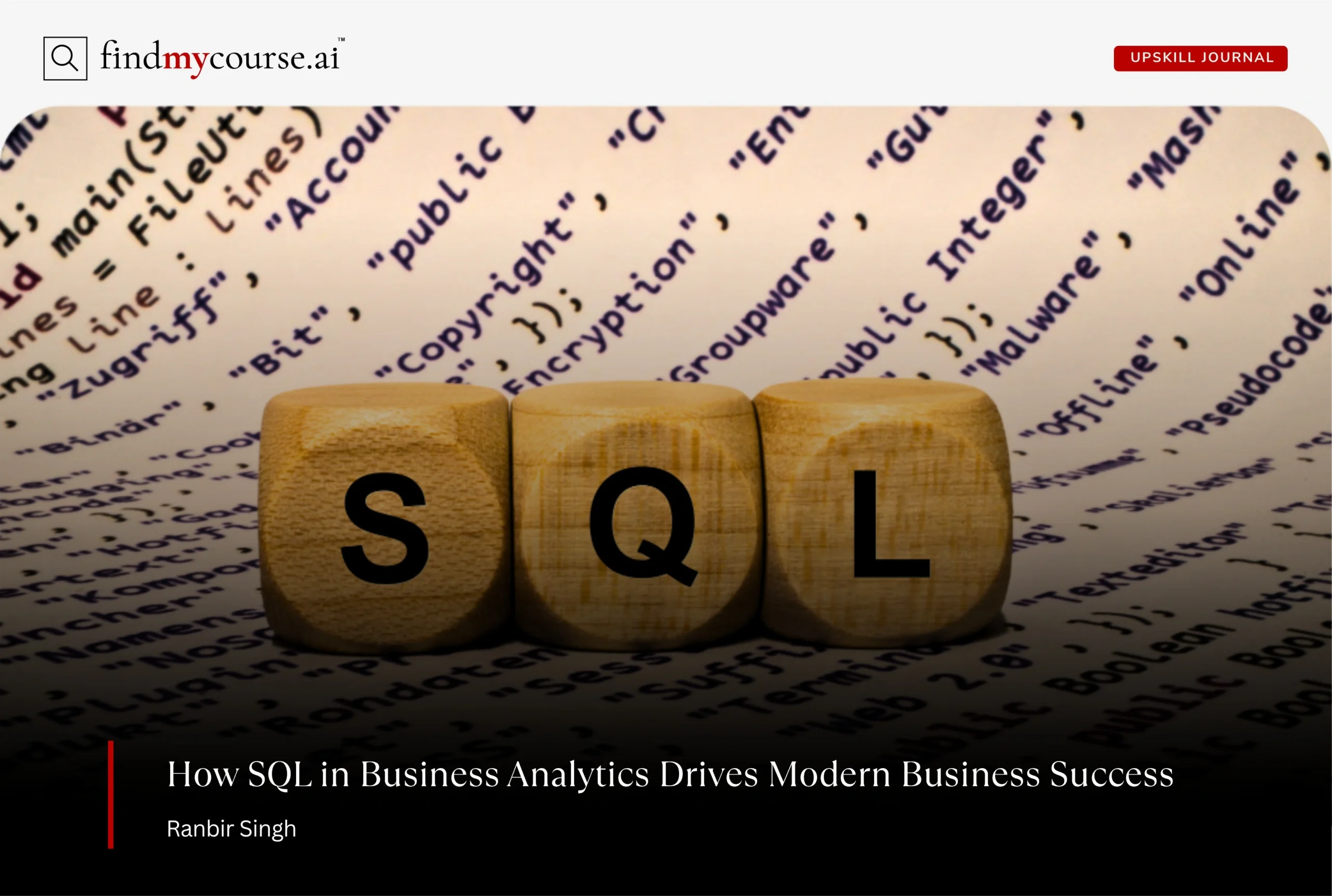Every modern business competes on its ability to make fast, data-driven decisions. But turning raw data into usable knowledge doesn’t happen by chance—it happens through structure, logic, and the right tools. At the center of this process sits SQL, the Structured Query Language that underpins nearly every analytics platform in the world. The role of SQL in business analytics is more crucial than ever in 2025. From uncovering customer insights to monitoring performance, SQL remains the universal language of data manipulation and discovery. It also allows analysts to pull the right data, refine it, and translate numbers into stories leaders can act upon. Let’s explore how SQL quietly shapes every step of business analytics and why it remains the trusted foundation for data-driven decisions.
SQL’s Place in the Business Analytics Ecosystem
Business analytics is the discipline of using data to guide strategy. It involves four key stages: data collection, processing, analysis, and interpretation. SQL plays a central role at every stage.
In technical terms, SQL is the language used to communicate with relational databases—the systems where most structured business data lives. In practical terms, it’s the tool that connects the questions business leaders ask (“Which product line is growing fastest?”) with the data that can answer them.
Even as cloud-native and AI-driven platforms evolve, SQL remains the connective tissue of analytics. It provides:
- Consistency, by standardizing how data is accessed and transformed;
- Transparency, by making every step of data handling visible and auditable;
- Scalability, by supporting everything from a single sales report to enterprise-wide analytics.
The Eight Essential Roles of SQL in Business Analytics
To understand the true impact of SQL in business analytics, it helps to see how this language operates across the entire data journey. The eight roles below reveal how SQL transforms raw information into strategic insight.
1. Data Extraction – Accessing What Matters
The first role of SQL in business analytics is data extraction. Every insight starts with locating and retrieving the right data. SQL queries allow analysts to pull precise information from massive databases—whether it’s daily transactions, customer records, or production metrics.
With commands like SELECT and WHERE, analysts can filter data instantly, saving hours compared with manual spreadsheet imports. This efficiency ensures that only relevant, high-quality data flows into the analytics pipeline.
2. Data Cleaning and Transformation – Preparing for Accuracy
Once data is retrieved, it must be cleaned and reshaped for analysis. SQL excels at this. Using statements such as UPDATE, CASE, and JOIN, analysts can standardize inconsistent values, merge data from multiple sources, and remove duplicates.
For example, a retailer can merge customer demographics with transaction history to reveal purchase patterns. This transformation stage ensures the analytics process starts from a foundation of accuracy—a non-negotiable in business decision-making.
3. Data Integration – Building a Unified View
Most organizations store information in several systems—finance, sales, marketing, logistics. SQL’s third role is integration, bringing those pieces together into a single, coherent dataset.
Through SQL-based ETL (Extract, Transform, Load) operations, analysts can also connect data from different departments and databases. The result: a unified perspective that helps executives see how one function impacts another—like how marketing campaigns influence revenue or how supply delays affect customer retention.
4. Data Aggregation – Simplifying the Complex
Large datasets can overwhelm decision-makers. SQL’s aggregation functions—SUM(), AVG(), COUNT()—summarize millions of records into clear, digestible insights.
For instance, instead of viewing every individual sale, analysts can aggregate total revenue by region or quarter. This summarization converts overwhelming complexity into simple, actionable figures that drive real-time strategy discussions.
5. Analytical Exploration – Finding the “Why” Behind the Data
After summarizing data, analysts turn to exploration—the investigative role of SQL. Advanced techniques like subqueries, window functions, and ranking allow them to uncover patterns and correlations.
Questions such as “Which customers are most likely to churn?” or “What time of year drives peak demand?” are answered through precise SQL logic. This role turns raw numbers into business intelligence, revealing not just what happened but why it happened.
6. Data Validation – Ensuring Integrity and Trust
Accurate data is the foundation of trustworthy analytics. SQL’s validation capabilities help detect inconsistencies, missing records, and anomalies that could distort findings.
For example, an analyst might run SQL checks to confirm that totals in a sales table match entries in a finance system. Identifying discrepancies early prevents flawed insights from influencing key decisions. In regulated sectors like finance or healthcare, this validation step is essential for compliance and audit readiness.
7. Data Reporting and Visualization – Feeding Business Intelligence Tools
SQL doesn’t just prepare data—it powers ongoing reporting. Most business intelligence platforms, such as Tableau, Power BI, and Looker, rely on SQL queries to feed dashboards with live, accurate data.
Automated SQL scripts can refresh reports daily, track KPIs, and alert teams to deviations in performance. So, this role transforms static reporting into continuous intelligence—helping leaders react faster to emerging trends.
8. Decision Support – Connecting Data to Action
Ultimately, every previous role converges into one outcome: decision support. SQL enables analysts to deliver insights that shape business strategy—forecasting sales, optimizing supply chains, or improving customer experience.
Because SQL allows direct visibility into the data’s origin, executives can make confident, evidence-based decisions. In this way, SQL serves as the analytical backbone of modern organizations, bridging the gap between raw data and strategic action.
Bridging the Analytical Journey – From Data to Strategy
When viewed together, these roles reveal the full journey of SQL in business analytics. SQL begins as a technical tool for extracting data, but it evolves into a strategic enabler that supports every level of decision-making.
In practice, this journey looks like a seamless loop:
- Extract what matters.
- Clean and integrate it for consistency.
- Aggregate and analyze for understanding.
- Validate for accuracy.
- Report and act on insights for better outcomes.
This cycle repeats daily across industries—from finance teams forecasting budgets to retail analysts tracking seasonal demand. Additionally, the reliability of SQL ensures that decisions are always backed by trustworthy, real-time information.
Moreover, SQL’s continued dominance in analytics stacks proves one point clearly: tools and trends may change, but the need for structured, explainable data never does.
Conclusion
The roles of SQL in business analytics extend far beyond simple querying—they form the architecture of modern decision-making. SQL extracts, transforms, integrates, validates, and also delivers data that empowers organizations to act with precision and confidence.
Moreover, as analytics becomes the heartbeat of business strategy, SQL remains its pulse as it guarantees transparency, consistency, and scalability—qualities no AI model or automation tool can replace entirely.
For any professional in analytics or business intelligence, mastering SQL isn’t just about syntax—it’s about understanding how data truly drives business performance. Learn it, apply it, and you’ll not only read the data—you’ll write the strategy. And If you’re unsure where to start or have any questions, just ask our AI Assistant for guidance.


